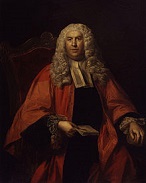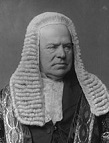



TLW's Common Lawscope™ (Common Law Historyscope) |
By T.L. Winslow (TLW), the Historyscoper™ |
© Copyright by T.L. Winslow. All Rights Reserved. |
Original Pub. Date: Apr. 8, 2017. Last Update: May 6, 2022. |


Westerners are not only known as history ignoramuses, but double dumbass history ignoramuses when it comes to English and American common law history. Since I'm the one-and-only Historyscoper (tm), let me quickly bring you up to speed before you dive into my Master Historyscope.
The basic system used by common law is based on Stare Decisis AKA Precedent, which works along with statutory law and regulatory law in modern courts.
Common-Law Marriage stretches back to pagan ancient Greece and Rome, eventually coming under the jurisdiction of canon law in medieval Europe.
In early English common law suicide was considered the crime of Felo de se (Lat. "felon of himself"), with the dead dork's property subject to forfeiture to the monarch after he is given a shameful burial; it takes until the 17th cent. for the dorks to be considered temporarily insane and their punishments gradually phased-out.
In 510 the Salic Law of the Franks undergoes its first rescension, first mentioning Trial by Ordeal, in this case by plunging the right hand into a boiling cauldron and pulling out a ring to prove innocence; French circuit judges hold Assizes (OF "assises" = session).


In 1066 the Norman Conquest of England sees the Norman, Breton, and French army of Duke William II of Normandy invade Anglo-Saxon England and conquer it from Harold Godwinson on Oct. 14 in the Battle of Hastings, calling himself William the Conqueror and turning the legal system French, introducing Trial by Battle.
In 1166 the Assize of Clarendon, issued by King Henry II from his royal hunting lodge at Clarendon Palace in Wiltshire reforms the English judicial system, ordering the building of jails in all English counties and boroughs, and permitting litigants to avoid trial by combat and be judged by "the country", i.e., a jury of 12 knights chosen in court by four knights named by the sheriff for a grand assize, and 12 freemen chosen by the sheriff for a petty assize; it takes until the end of the 13th cent. for trial by jury to spread throughout England; three petty assizes are established, incl. the Assize of Novel Disseisin (Lat. "recent dispossession"), allowing a plantiff to quickly get his property restored while leaving the question of true ownership till later, helping transform English law from trial by ordeal, battle, or compurgation to the evidentiary model, requiring parties to testify under oath; the three petty assizes are abolished in 1833.
In the 13th cent. the Writ of Trespass on the Case originates in the royal courts of London; in Aug. 1278 the Statute of Gloucester is passed, becoming the first recorded in a Statute Roll, encouraging loyal subjects to petition King Edward I against his own barons and ministers, modifying novel disseisin (Lat. "recent dispossession") (action for recovery of land seized illegally), reviving the system of gen. eyres (royal justices riding circuit), and increasing the number of pleas of quo warranto (Lat. "by what warrant?") that they can hear; too bad, the statute limits actions on writs of trespass in the royal courts to property damage above 40 shillings, maims, beatings, and wounds, causing the writs to begin alleging "vi et armis" (force and arms).
In 1293 England establishes four circuits for assizes, reorganizing them in 1328 into six circuits.
In the 14th cent. the Assumpsit (Lat. "he has undertaken") form of action at common law originates in England when litigants seeking justice in the royal courts turn from the writs of covenant and debt to the trespass on the case, becoming the beginning of modern contract law incl. unjust enrichment.
In 1321 the first use of a Bill of Attainder in England is against Hugh le Despenser and his son Hugh Despenser the Younger for supporting Edward II in his war with the queens and barons; attainder (taintedness) nullifies a person's civil rights, forfeiting his property to the crown or his mesne lord, along with all peerage titles, combined with execution; too bad, it becomes a convenient way for a king to dispose of political enemies without a trial, even dead ones, incl. the Duke of Clarence (1478), Thomas Cromwell (1540), Catherine Howard (1542), Archbishop William Laud (1645), Richard III (1485), and Oliver Cromwell (1660); the last use of attainder was in 1789 against Irish rebel Lord Edward FitzGerald.
In 1610 Dr. Bonham's Case, decided by English chief justice Sir Edward Coke establishes the principle of judicial review of legislative acts, with the soundbyte "In many cases the common law will control acts of Parliament and sometimes adjudge them to be utterly void; for when an Act of Parliament is against common right or reason, or repugnant, or impossible to be performed, the common law will control it and adjudge such Act to be void."

On July 3, 1753 English barrister Sir William Blackstone (1723-80) gives up his practice to embark on a series of lectures on English common law, the first of their kind, becoming a big hit and leading to the 1756 pub. of the bestseller An Analysis of the Laws of England (Clarendon Press), getting him appointed on Oct. 20, 1758 as the first Vinerian Prof. of Common (later English) Law at Oxford U., endowed by Charles Viner (1678-1756). leading to another series of lectures and the 1758 pub. of A Discourse on the Study of the Law, followed in Nov. 1765 by vol. 1 of 4 of his bestselling magnum opus Commentaries on the Laws of England (1765-9) (Clarendon Press), incl. vol. 1 (rights of persons), vol. 2 (rights of things), vol. 3 (private wrongs), and vol. 4 (public wrongs), which becomes a std. work and is later used by the Am. Founding Fathers, and quoted from in opinions of the U.S. Supreme Court.
On Feb. 13, 1812 the U.S. Supreme (Marshall) Court rules unanimously (6-0) in U.S. v. Hudson that in order for federal courts to render a criminal conviction for some activity, Congress must first enact a law criminalizing the activity, attach a penalty, then give the courts jurisdiction, barring them from trying and convicting defendants for common law crimes and introducing the principle of Nulla poena sine lege (Lat. "no penalty without a law"); courts retain implied powers to punish litigants for contempt of court and for defying court orders; Justice Bushrod Washington recuses himself.
In 1819 Britain finally officially ends trial by combat.

In 1846 Haddam, Conn.-born law reformer David Dudley Field Jr. (1805-94) pub. the pamphlet The Reorganization of the Judiciary, inducing the Constitutional Convention of New York to vote in favor of codifying state laws to get away from common law pleading, appointing Field next year as head of a commission; his Field Code of civil procedure is partly enacted in 1848, and in full by the New York legislature on Jan. 1, 1850, and subsequently adopted in whole or part by more than half of U.S. States, followed by England in 1873; his code of criminal procedure is adopted by a third of U.S. states, incl. New York (1857).

In 1907-17 London-born Hardinge Stanley Giffard, 1st Earl of Halsbury (1823-1921) pub. Halsbury's Laws of England (31 vols.), which becomes a std. work; followed by "Halsbury's Statutes" (1929), and "Halsbury's Statutory Instruments".
On May 12, 1971 the British Parliament passes the Courts Act of 1971, modernizing the court system of England and Wales, establishing the Crown Court while abolishing all assize curtws, quarter sessions et al.